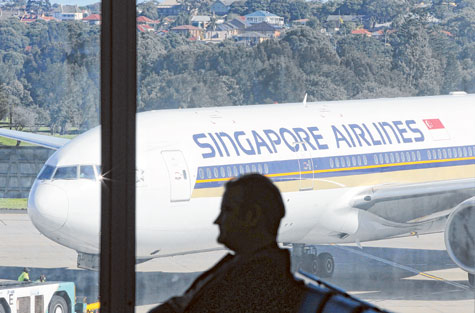
Singapore: Cash-rich Singapore Airlines will likely need acquisitions or more partnerships as it reshapes its strategy to tap into the fast-growing Asian markets and to counter stiff competition from Middle Eastern carriers.
SIA’s cash pile stands at S$4.7 billion ($3.85 billion), and that is set to increase after it agreed to sell a 49 per cent stake in Virgin Atlantic to Delta Air Lines for $360 million. SIA had written off the investment after purchasing the stake in 2000.
China and India are obvious growth markets to tap. SIA has tried to buy into the two countries’ carriers previously, without success. “India is opening up, and the airlines there are quite distressed, so it could be one possible area,” said Derrick Heng, an analyst at Phillip Securities.
“SIA is more than capable of funding their acquisitions with a strong balance-sheet and whatever cashflows will come from the sale of Virgin Atlantic.”
Singapore Airlines is also taking on low-cost rivals with the launch of its own budget carrier, Scoot, and is expanding this line of business across the region. SIA, the world’s second largest airline with a market value of $10.7 billion, is controlled by state investor Temasek Holdings Pte Ltd.
The stake sale in Virgin Atlantic underlines the carrier’s shift away from Europe and the US and back to Asia. SIA says the outlook remains grim as Europe and the US remain mired in an economic crisis.
The company’s profit and growth are on the decline. The business slowdown recently forced SIA to cut flying hours for junior pilots, but it has been ordering aircraft and looking beyond the lean times.
“It’s basically surviving this period where global conditions are not very good, and where their strategy is taking time to bed down in Asia,” said Brendan Sobie, chief analyst for CAPA - Centre for Aviation, an industry consultancy.
“They are not going to necessarily lose money, they are not going to be incredibly profitable, but they have the big cash obviously in the bank to wait. It’s not like desperation or anything.”
SIA’s chief executive Goh Choon Phong, who took charge in January 2011, has said the carrier needs to again target China and India. SIA bid for a stake in China Eastern Airlines five years ago with Temasek, but its offer was rejected by minority shareholders of the Chinese airline.
SIA had also bid for a stake in Indian Airlines in 2000 with the Tata group but then pulled out. In September, India changed its foreign direct investment policy to allow foreign carriers to buy stakes of up to 49 per cent in domestic airlines in a bid to woo investment back.
“We’d like to grow more in China and India, but there are some limitations to operations in both those countries,” said SIA spokesman Nicholas Ionides, referring to traffic rights in India and airport slots in parts of China.
Though SIA needs acquisitions, it has to reconsider its past strategy such as taking a minority stake in Virgin Atlantic. “Unless you can acquire somebody, either in your own home market or within a regional block where you can actually gain access to control, a minority shareholder in other airlines is generally a recipe for disaster. And if any should know that, it should be SIA,” said Timothy Ross, an analyst at Credit Suisse.
SIA, best known for its premium services, has taken low-cost airlines head on by launching Scoot, but it might take years before the start-up delivers any meaningful financial returns to the group.
Scoot to plies middle distance routes between Singapore and countries such as China and Australia. “The biggest change is the low-cost and multi-brand strategy, focusing more on Silk Air, launching Scoot and increasing their involvement in Tiger,” said Sobie.










